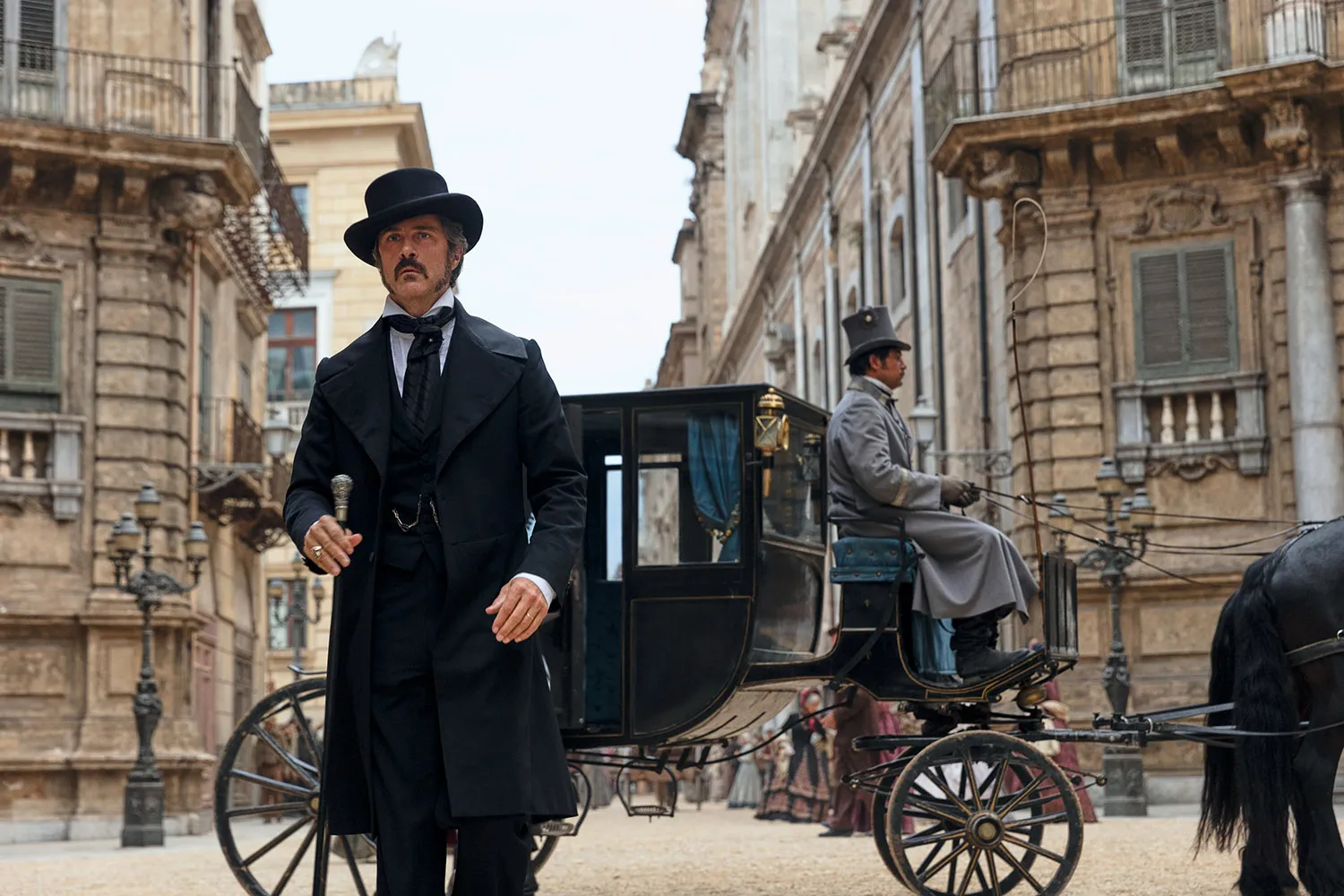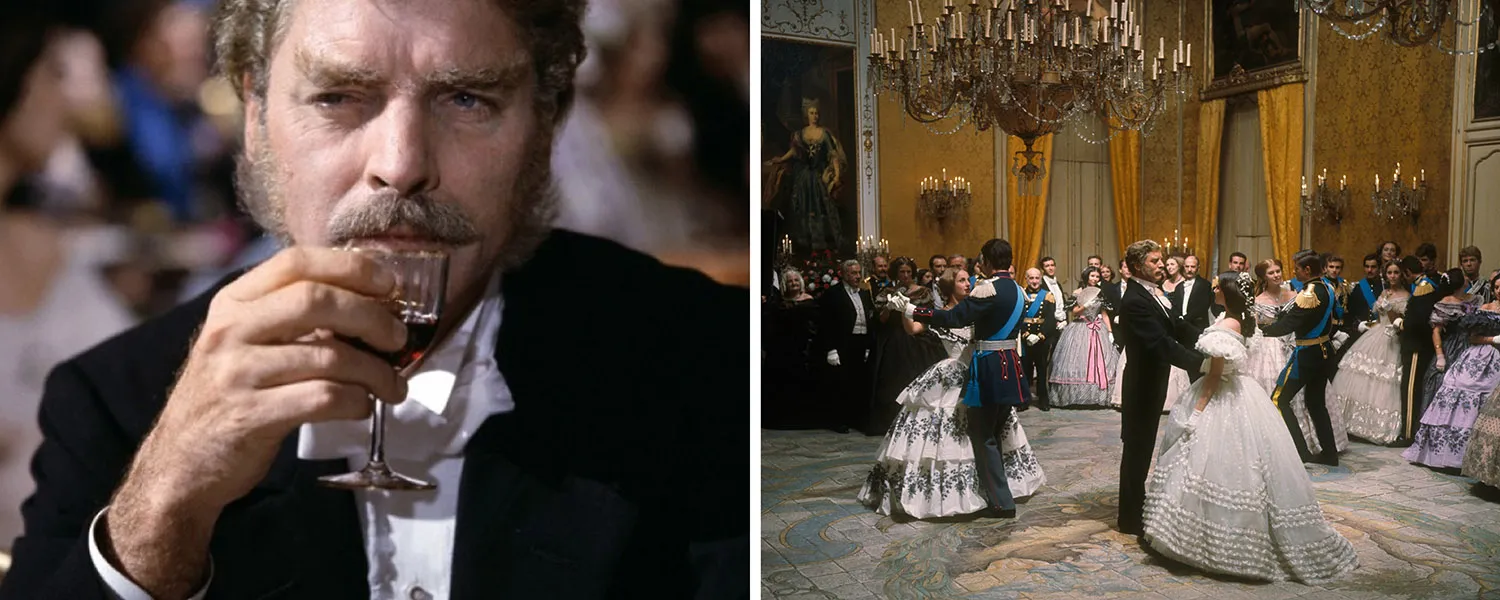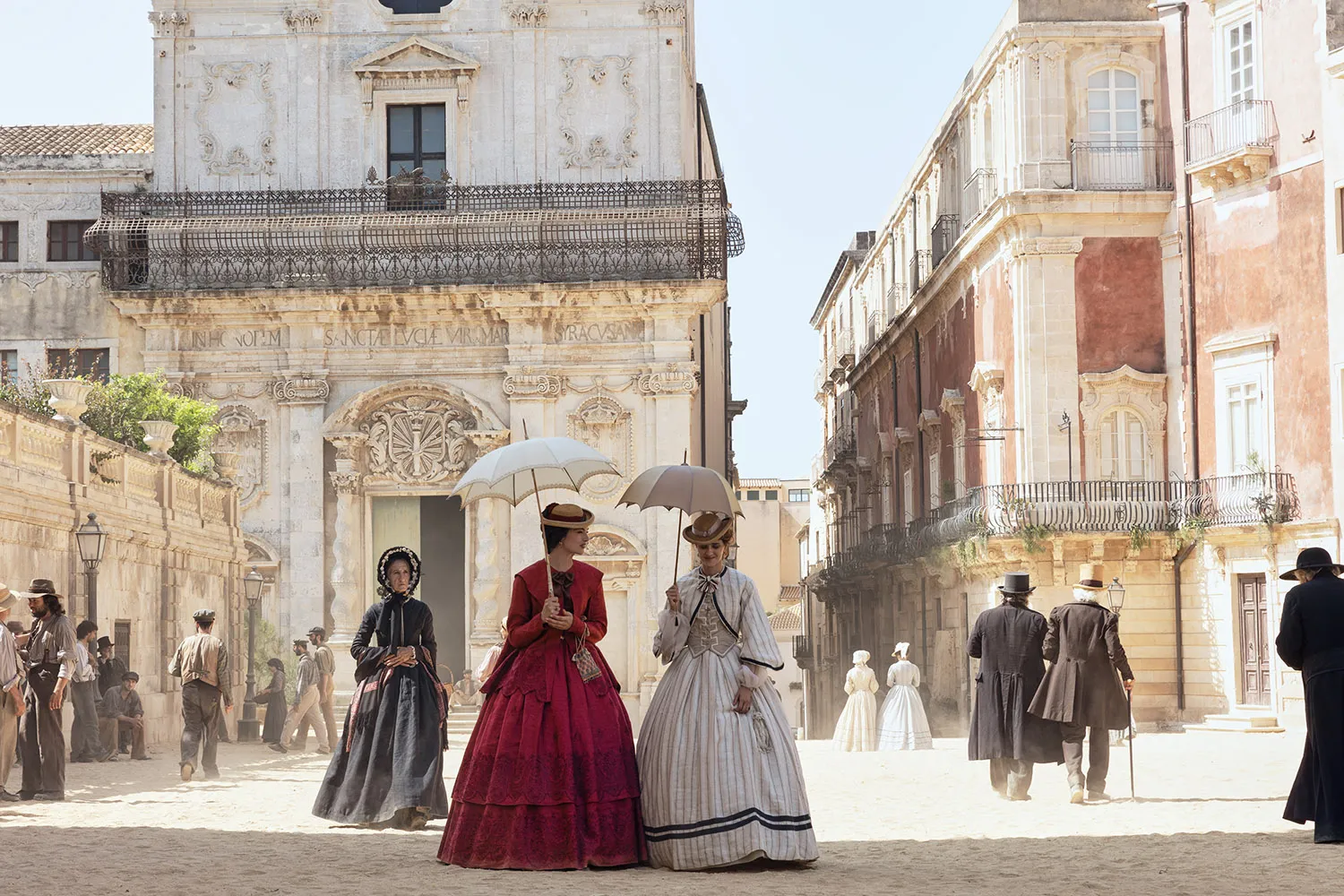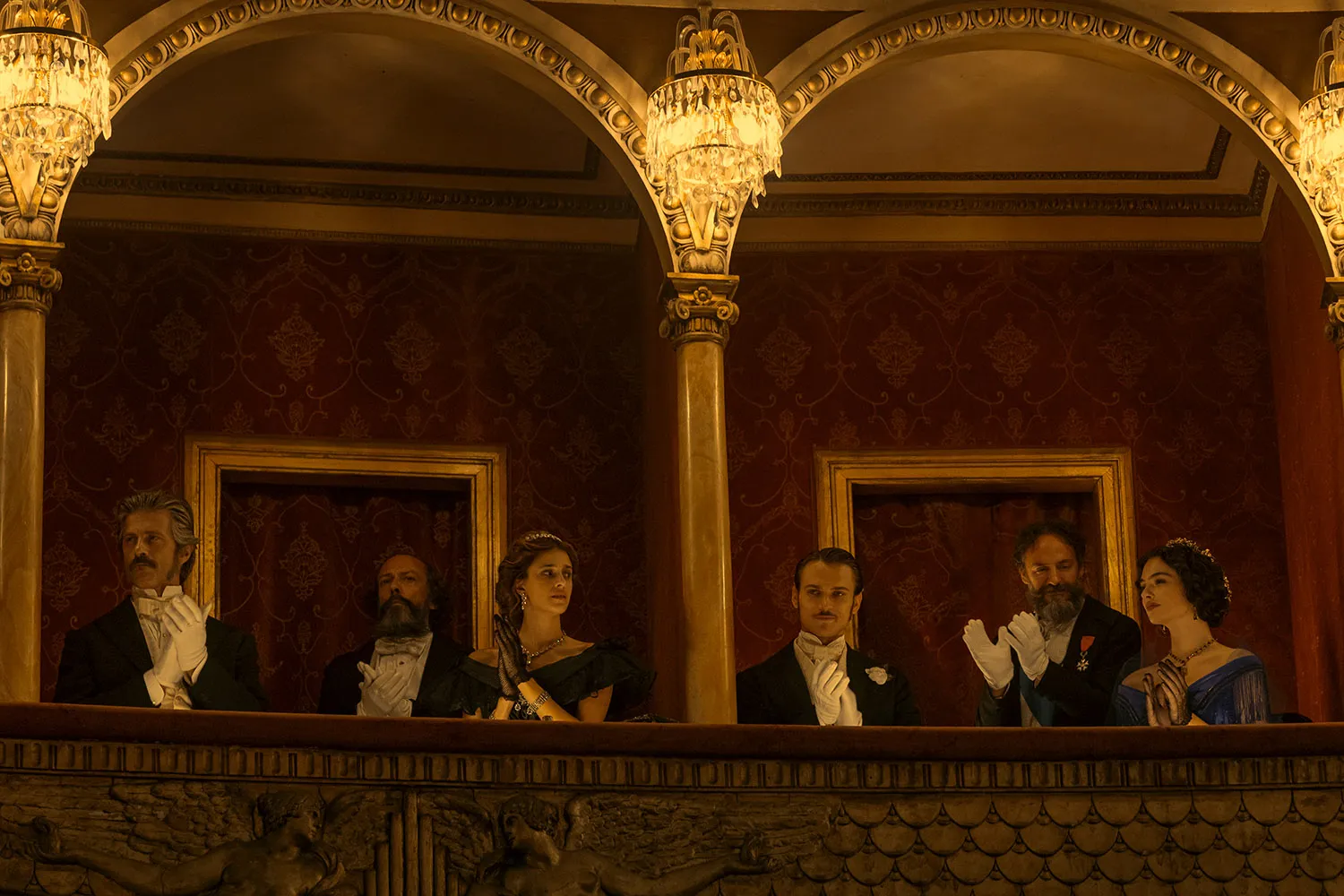Before I hit play on Netflix’s six-episode series The Leopard, I let some of my film critic chums know I was doing so in a group chat. “Can’t wait for Night of the Hunter on Hulu!” one zinged. “Is that before or after Amazon’s Citizen Kane?” replied another. “Not sure, but I’m loving season three of Taxi Driver on Max.” For a certain stripe of cinephile snob (a group that, I guess, includes me), this newest rivulet of “streaming content” spun off from revered masterpieces of world cinema seemed like sacrilege.
And on the one hand, I get it. The original Leopard, Luchino Visconti’s three-hour epic starring Burt Lancaster, Alain Deloin, and Claudia Cardinale—the winner of the top prize at the 1963 Cannes Film Festival—is huge in scale and boldly singular in its artistic aims, and a prime example of something “they don’t make anymore.” But does that automatically mean another telling of the tale has to be junk?
Remakes are nothing new (technically The Wizard of Oz is a remake) but finding a sizable production not based on a previously established intellectual property is increasingly difficult these days. In theaters this spring is a movie derived from the Minecraft video games—smart business considering that product’s enormous success, but a tad cynical in that Minecraft’s whole shtick is that it has no set narrative. I am regularly reminded of an anecdote recounted by Peter Biskin in his 1998 history of “New Hollywood,” Easy Riders, Raging Bulls: Director William Friedkin, hot off the critical and financial successes The French Connection and The Exorcist, approached French filmmaker Henri-Georges Clouzot, seeking his blessing before shooting Sorcerer, which was essentially a remake of Clouzot’s The Wages of Fear. The Frenchman was hesitant to do so, but finally relented after the young American quipped, “I promise you, I will not do it as well as you did.”
While the Wages of Fear vs. Sorcerer debate shall never die (both have their individual merits!) most will likely agree that Friedkin’s prophecy has been fulfilled this time. The new Leopard doesn’t touch the original. However, there are some aspects to it that make it worth your time.

Based on Giuseppe Tomasi di Lampedusa’s 1958 novel, it’s fair to call The Leopard Italy’s stab at something like War and Peace or Gone with the Wind. It is set during the unification of Italy, from the perspective of an aristocratic family in Sicily, led by Don Fabrizio Corbera, prince of Salina, loyal to the House of Bourbon. His nickname is Il Gattopardo, and a sculpture of a leopard is seen atop the palace gate. How he became associated with this nimble, fearsome beast is never explained, but one quickly surmises it has something to do with staying a few steps ahead of his enemies.
Indeed, when General Garibaldi’s army arrives on the Sicilian shores, the Prince takes a strong “this too shall pass” attitude. (His nephew, Tancredi, is quicker to take action, joining the invading forces and saying, “If we want things to stay as they are, things will have to change.”) The Prince is fundamentally indifferent, perhaps even hostile, to the ebb and flow of ephemeral political changes, secure in the belief that Sicily and her people will always remain rooted in the old ways. The Leopard, though it has no shortage of additional storylines, chronicles the Prince’s slow realization that, actually, history has finally caught up with him and he has been declawed.
Visconti’s version boasted Hollywood’s Burt Lancaster at the center of the tale. He spoke his lines in English, which was used for a U.S./U.K. release, but was dubbed into Italian for the European cut, which was not uncommon for the era. (The Italian one with subtitles is what you’ll find on most of the current streaming platforms and what played in arthouse theaters when the picture was remastered in 2003 by the British Film Institute.) His transformation from robust, virile nobleman into a husk from another time is a marvel of physical performance. Not that he is a pillar of righteousness, but he has a commitment to his family, his people and the Sicilian culture. (As well as a refined wardrobe and penchant for waltzes.) The final 30 minutes of the film shows his wandering from room to room at a sickeningly ostentatious ball, witnessing the metastasis of corruption, his hovering presence akin to a lingering ghost’s. The movie is defiant in trading plot for what today we’d welcome as “vibes.”
This approach allows plenty of time to luxuriate in jaw-dropping images where you can practically smell the cathedral incense, originally presented in 70mm. Visconti shot on location at the Palazzo Valguarnera Gangi, , and several other impossibly beautiful spots that will make you want to drop everything and book the next ITA Airways flight. In addition to this long arc, the rest of the plot, which mostly follows Tancredi (Alain Delon) as he maneuvers through military politics and love, is weirdly slow-paced for a movie that remains breathtaking.

An hour into the movie, though enjoying the company of his charming cousin Concetta (Lucilla Morlacchi), Tancredi is thunderstruck by the appearance of Angelica (Claudia Cardinale), a striking debutante and daughter of a nouveau riche governor. Movies back then didn’t do the “record scratch freeze frame” gag, but her announcement and entrance at a formal dinner is exactly the same beat. It’s hilarious. Anyhow, the pair get together and fall in love and, while their union may represent a melancholy dynastic shift for the Prince, for everyone in the audience it’s mostly a chance to gaze upon gorgeous people as they hide in the shadows to smooch then romp around the empty rooms in an enormous palace.
I bring this up because this relationship represents the biggest difference between the older version and the new one now on Netflix. With six hour-long episodes, we’ve got double the running time—but with a more modern attitude toward pace, it’s at least three times as much plot. As such, Deva Cassel’s Angelica gets a bit of a backstory, and we see that she isn’t just paragon of beauty, but something of a socially mobile schemer. Also, unlike Claudia Cardinale, Cassel—the daughter of Monica Bellucci and Vincent Cassel—has a face that just seems more Instagram-ready, or at least that’s how the modern production crew shoots her.
The Leopard was adapted for television by British writer-producer Richard Warlow, whose previous credits include the Whitechapel-set Ripper Street and The Serpent, a 1970s-set murder mystery on the Asian “hippie trail.” Thankfully, two of the directors involved in this project, Laura Luchetti and Giuseppe Capotondi, are actually Italian.

The series, which is spoken in Italian, was shot primarily in Sicily, and while nothing can match Visconti’s look, it does not skimp on the locations, sets, costumes, or candlelight. A few of the scene-setting master shots have obvious computer-generated enhancements, but by and large, the series has a tactile (and expensive) feel to it. The lead performer, Kim Rossi Stuart, lacks Burt Lancaster’s gravitas, but he definitely cuts a sharp figure, exuding patrician confidence and sophistication. Like so many other “complicated men” at the center of a meaty series—think Don Draper or Tony Soprano—there isn’t a whole lot of righteous behavior, but he is a “man with a code.” We inevitably find ourselves rooting for the guy. All of these grand figures really have one goal: a passionate desire to maintain the status quo. And when that status quo is just so photogenic, it’s hard to argue against it.
As such, the six episodes get into the nitty gritty of who is embezzling from the Prince’s lemon orchard, and how he can use that knowledge to bank favors that will only become useful years from now. There’s also time to explore details of the Risorgimento, the political movement that led to modern Italy. History buffs will certainly love some details, like how Victor Emmanuel II needed to halt Garibaldi’s push into Rome, which would have been seen as a threat against the Vatican and forced France into war with the new nation. (The first Italian parliament was based in Turin, a fact I did not know, but now am ready to deploy should it come up in bar trivia.)
Other additional plot threads not found in the film involve the Prince’s daughter (once she’s dissed for Angelica) joining a convent, and the Prince’s son getting manipulated by Angelica’s father—presented as rather a benign doofus in the movie, but a bit more sinister here. You’ll also see how a corpse is kept from rotting at an open casket ceremony in the blazing Sicilian heat.

If this all reads like praise, well, it basically is. Sure, the pacing of the series, similar to The Crown and other Netflix hits, rolls through like an express train and every episode concludes with an “oh, now what?!” (Netflix must never allow the viewer a moment to lose interest!) But I cannot deny the great entertainment value in this formula.
The problem, inasmuch as there is one, is really entirely of my own making. I was foolish enough to have a familiarity with Visconti—the great Milanese director of Rocco and His Brothers, The Damned, and Death in Venice—before I made the acquaintance of (checks notes again) Richard Warlow.
What we have with The Leopard are products of two different eras. Though half the length, the movie, more a mediation on themes and setting than a juicy story, still feels like the “bigger” project, with an eye on the journey rather than the destination. The series, crammed with plot plot plot, may have more talking, but not more to say. The 1963 version requires more intellectual rigor out of a viewer—you need to pay attention to keep the characters straight and to follow the nuances of the conflict—but the 2025 version’s soap opera beats are undeniably fun.
Luckily, we live in a world where we can have both. It is a little worrying, though, that artists like Visconti seem more and more like figures from the past. This is something the Prince of Salina knows a thing or two about.
The post ‘The Leopard’ Slinks Into the Streaming Era appeared first on Foreign Policy.




